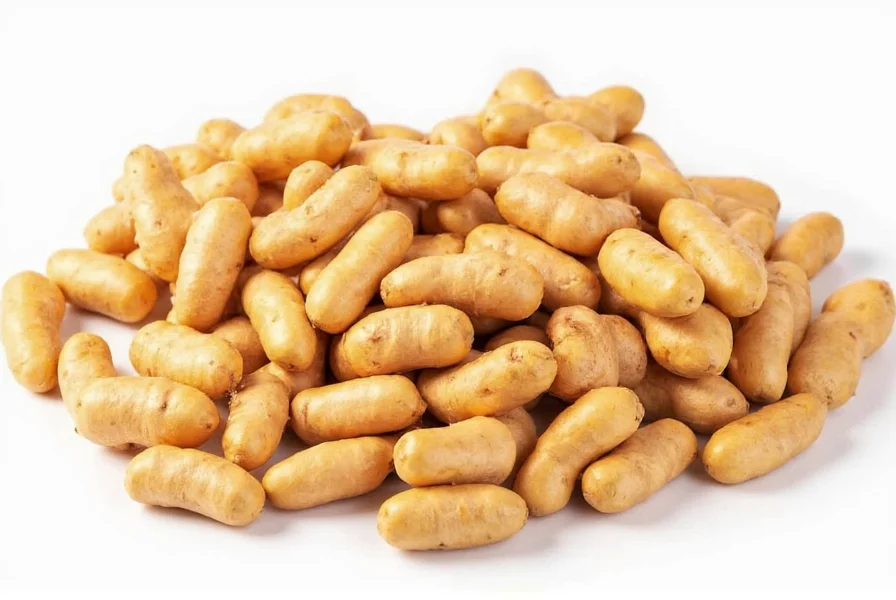Understanding the True Ginger Plant: Zingiber officinale
Ginger, known scientifically as Zingiber officinale, belongs to the Zingiberaceae family, which includes other aromatic plants like turmeric and cardamom. This perennial herb originated in Southeast Asia and has been cultivated for over 5,000 years for both culinary and medicinal purposes. The part most commonly used is the rhizome—often mistakenly called a root—which contains the characteristic pungent compounds that give ginger its distinctive flavor and therapeutic properties.
When searching for information about “ginger zingiber,” it's essential to understand that Zingiber refers to the genus, while Zingiber officinale specifies the common ginger species. This scientific precision helps differentiate true ginger from other plants with “ginger” in their common names but different botanical classifications.
Botanical Characteristics of Zingiber officinale
Zingiber officinale grows up to three feet tall with narrow leaf blades and yellow-green flowers with purple lips. The rhizome—the underground stem that serves as the plant's storage organ—features a thin brown skin and yellowish flesh. This rhizome contains gingerols, the primary bioactive compounds responsible for ginger's pungency and many of its health properties.
| Characteristic | Description |
|---|---|
| Family | Zingiberaceae |
| Native Region | Southeast Asia |
| Plant Type | Perennial herbaceous plant |
| Height | 2-3 feet (60-90 cm) |
| Active Compounds | Gingerols, shogaols, zingerone |
| Harvest Time | 8-10 months after planting |
Distinguishing True Ginger from Other “Gingers”
Many plants share “ginger” in their common names but belong to different botanical families. Understanding these differences is crucial when researching Zingiber officinale health benefits or culinary applications:
- Galangal (Alpinia galanga) - Often called “Thai ginger,” this has a sharper, more citrusy flavor and belongs to the same family but different genus
- Turmeric (Curcuma longa) - Known for its bright yellow color, it's a close relative but has distinct chemical properties
- Wild ginger (Asarum canadense) - Not related to true ginger and contains potentially harmful compounds
- Cassumunar ginger (Zingiber cassumunar) - A different species within the same genus with unique properties
Proper identification matters significantly when studying the botanical characteristics of ginger or researching its specific health effects. Many scientific studies on ginger’s anti-nausea properties, for example, specifically use Zingiber officinale extracts.
Scientifically Supported Health Benefits
Research on Zingiber officinale has revealed several evidence-based health applications. Unlike many herbal remedies with exaggerated claims, ginger has substantial scientific backing for specific uses:
The most well-documented benefit is ginger's effectiveness against nausea. Multiple clinical trials confirm that Zingiber officinale can reduce nausea and vomiting associated with pregnancy, chemotherapy, and surgery. A 2020 meta-analysis published in Nutrients found that doses of 1-1.5 grams daily significantly reduced nausea symptoms without serious side effects.
Ginger also demonstrates notable anti-inflammatory properties. The gingerols and shogaols in Zingiber officinale inhibit inflammatory pathways in the body, which may explain its traditional use for pain relief. Research suggests it may help reduce osteoarthritis pain and muscle soreness, though effects are generally modest compared to pharmaceutical options.
When examining research on ginger anti-inflammatory properties, scientists note that fresh ginger contains more gingerols, while dried or cooked ginger has higher shogaol content—compounds with potentially different biological activities.
Culinary Applications of True Ginger
The culinary versatility of Zingiber officinale spans global cuisines. In Asian cooking, fresh ginger forms the flavor base for countless dishes. In Western baking, dried ginger powder features prominently in spice cookies and gingerbread. The chemical composition changes when ginger is processed:
- Fresh ginger - Highest in gingerols, providing sharp, bright flavor
- Dried ginger - Contains more shogaols due to dehydration, resulting in spicier taste
- Candied ginger - Preserves flavor while adding sweetness
- Ginger essential oil - Concentrated flavor compound used in small amounts
Chefs seeking authentic flavors should understand the difference between ginger and galangal, as substituting one for the other significantly alters dish profiles. While both belong to the Zingiberaceae family, galangal has a more complex, pine-like flavor that doesn't substitute well in recipes calling specifically for Zingiber officinale.
Growing Zingiber officinale
Cultivating true ginger requires specific conditions that mimic its tropical origins. Gardeners interested in growing Zingiber officinale at home should note these requirements:
- Warm temperatures (75-85°F / 24-29°C)
- High humidity levels
- Filtered sunlight or partial shade
- Well-draining, nutrient-rich soil
- Consistent moisture without waterlogging
The growing cycle typically takes 8-10 months from planting to harvest. Rhizomes should be planted with the growth buds facing upward, about 2 inches below the soil surface. In non-tropical climates, ginger grows well in containers that can be moved indoors during colder months.

Safety Considerations
While generally recognized as safe, Zingiber officinale may interact with certain medications. People taking blood thinners should consult healthcare providers before consuming large amounts, as ginger may increase bleeding risk. Those with gallstones should also exercise caution, as ginger stimulates bile production.
The appropriate dosage depends on the application. For nausea relief, studies typically use 1-1.5 grams daily. Higher doses (more than 4 grams daily) may cause gastrointestinal discomfort in some individuals. Pregnant women should consult their healthcare provider before using ginger medicinally, though culinary amounts are generally considered safe.
Conclusion
Understanding that Zingiber officinale is the scientific name for common ginger provides clarity when researching this versatile plant. This precise botanical identification helps distinguish true ginger from other plants with “ginger” in their names but different properties. Whether you're exploring the chemical composition of Zingiber officinale for health purposes or learning how to identify the true ginger plant for culinary use, this scientific precision ensures you're working with accurate information.

Frequently Asked Questions
What is the scientific name for common ginger?
Zingiber officinale is the scientific name for common ginger, distinguishing it from other plants with "ginger" in their common names but different botanical classifications.
How is Zingiber officinale different from other plants called 'ginger'?
Zingiber officinale belongs to the Zingiberaceae family but is a specific species. Plants like galangal (Alpinia galanga) and wild ginger (Asarum canadense) belong to different genera and have distinct chemical properties and effects despite sharing "ginger" in their common names.
What are the main health benefits of Zingiber officinale supported by research?
Research supports Zingiber officinale's effectiveness for nausea relief (particularly pregnancy-related and chemotherapy-induced nausea) and demonstrates anti-inflammatory properties that may help with osteoarthritis and muscle pain. Most clinical studies use doses of 1-1.5 grams daily.
Can I grow Zingiber officinale at home?
Yes, Zingiber officinale can be grown at home in warm, humid conditions with partial shade. It requires well-draining soil and consistent moisture. In non-tropical climates, grow it in containers that can be moved indoors during colder months. The growing cycle typically takes 8-10 months.
What are the active compounds in Zingiber officinale?
The primary bioactive compounds in Zingiber officinale are gingerols, which give fresh ginger its pungency. When ginger is dried or cooked, gingerols convert to shogaols, which are even more pungent. These compounds are responsible for most of ginger's health properties.











 浙公网安备
33010002000092号
浙公网安备
33010002000092号 浙B2-20120091-4
浙B2-20120091-4